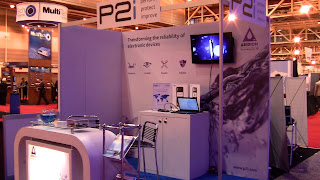Now we turn our attention towards the early 2000s, which proved to be an exciting time for nanotechnology. The field could now be explored and debated in greater depth. Drexler and Smalley, for instance, famously engaged in a public discussion about approaches to nanotechnology, with Drexler defending his idea of "universal assemblers" and Smalley offering objections.
Meanwhile, concerns about the broader implications of nanotechnology - a potentially very powerful but still relatively new field - were being raised and addressed with consideration given to both the potential benefits as well as risks involved. In 2003 congressional hearings on the societal implications of nanotechnology were raised and in 2004 the Royal Society and Royal Academy of Engineering published a report on the implications of nanotechnology and nanoscience, which you can read here.
Nanotechnology also began to appear more in more commercial settings during the 2000s, including the emergance of our technology and the launch of ion-mask™ on Hi-Tec shoes:
In the early part of the decade, titanium dioxide and zinc oxide nanoparticles were included in sunscreen and cosmetics, and carbon nanotubes were used to make textiles stain-resistant. By 2011 the Project on Emerging Nanotechnologies estimated that there were over 1300 nanotech products publicly available.
In our next and final post of the series, we'll take a closer look at what the future might hold for nanotechnology. If would like to read some of our early posts in this series you can through the links below:
You can also find out more about our ion-mask™ technology here and as always if you have any questions we would love to hear them.




.jpg)
